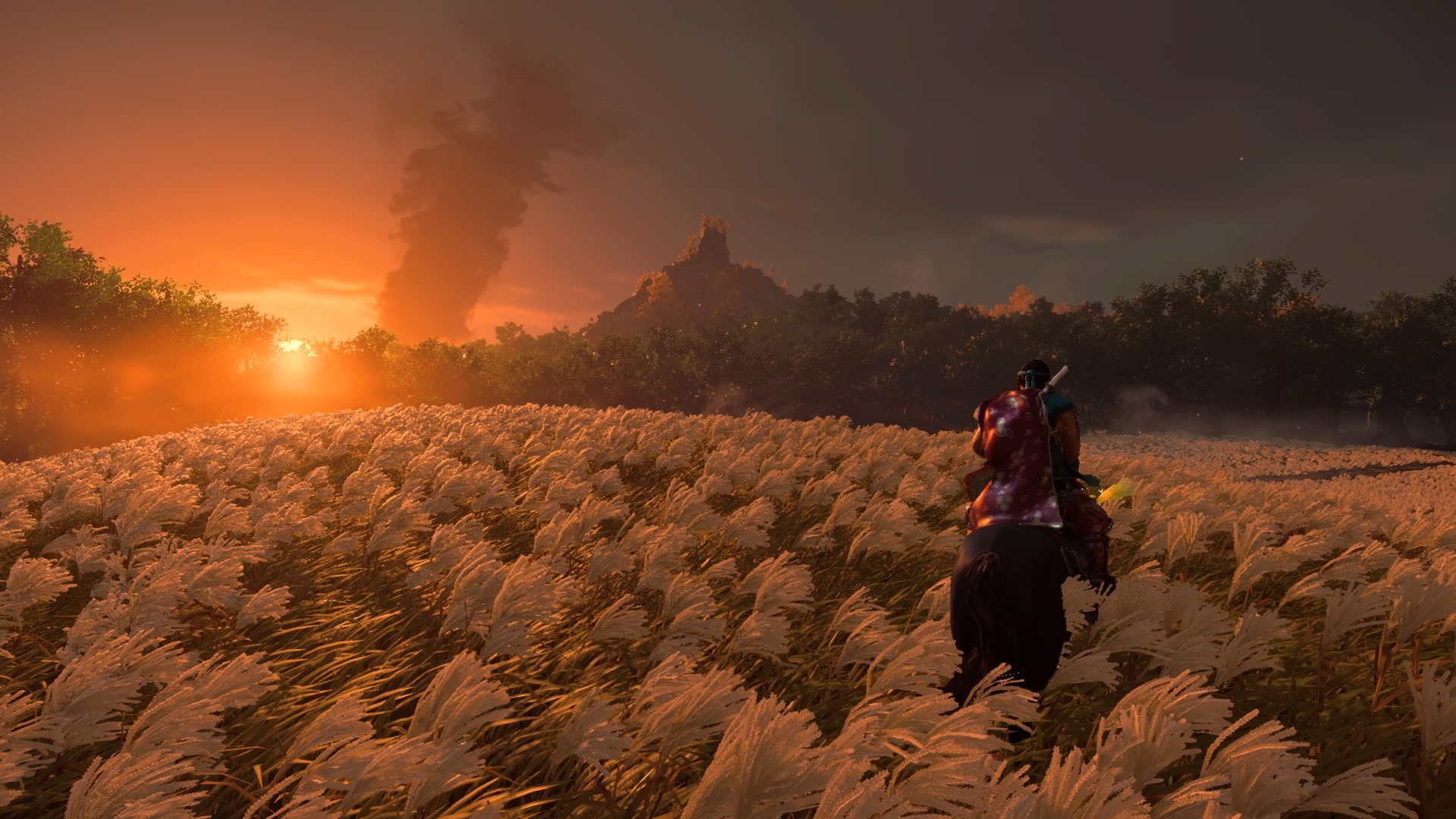Ghost of Tsushima is one of the best examples of UX innovation in modern gaming. The most recent title by game developer Sucker Punch, this open-world samurai epic has been critically acclaimed for its gorgeous setting, smooth combat, and compelling characters. Ghost of Tsushima delivers a polished, thoroughly satisfying experience, in large part due to innovative UX design.
The HUD
The aspect of the user experience that has been given the most attention by reviewers is the on-screen HUD—or, rather, the lack of it. In a break from typical open-world games, most HUD elements are hidden by default.
The image below illustrates how health and other combat information remain hidden until the player draws their sword.
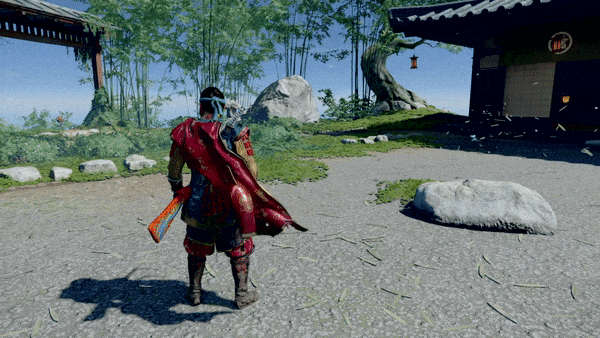
Likewise, ammo count for ranged weapons is concealed until needed.
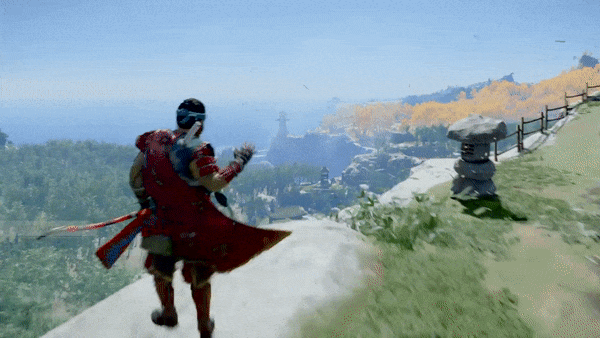
This "just enough" UI approach significantly reduces on-screen clutter, allowing players to focus instead on Ghost of Tsushima's gorgeous depiction of 13th century Japan.
Colors of the Wind
Their greatest innovation was their pioneering of the "windicator"—a guiding wind that blows on command, kicking up leaves and grass in the general direction of the player's next objective.
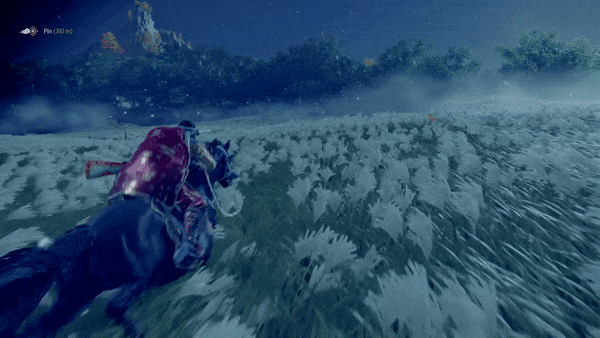
Designed to engage the user in navigating the game world, the guiding wind effortlessly replaces a traditionally distracting feature—navigation—with something organic. This simplifies the HUD and allows the environment to interact with the player, further immersing them in the world (more details on the guiding wind here).
The wind also makes the environment kinetic—this reinforces the role nature and movement play in Ghost of Tsushima, an important connection to the Kurosawa movies that inspired it (excellent video essay on this topic here).
It's an excellent example of how UX design and art direction can combine to not only provide function, but also reinforce the themes in a game.
Maps and Menus
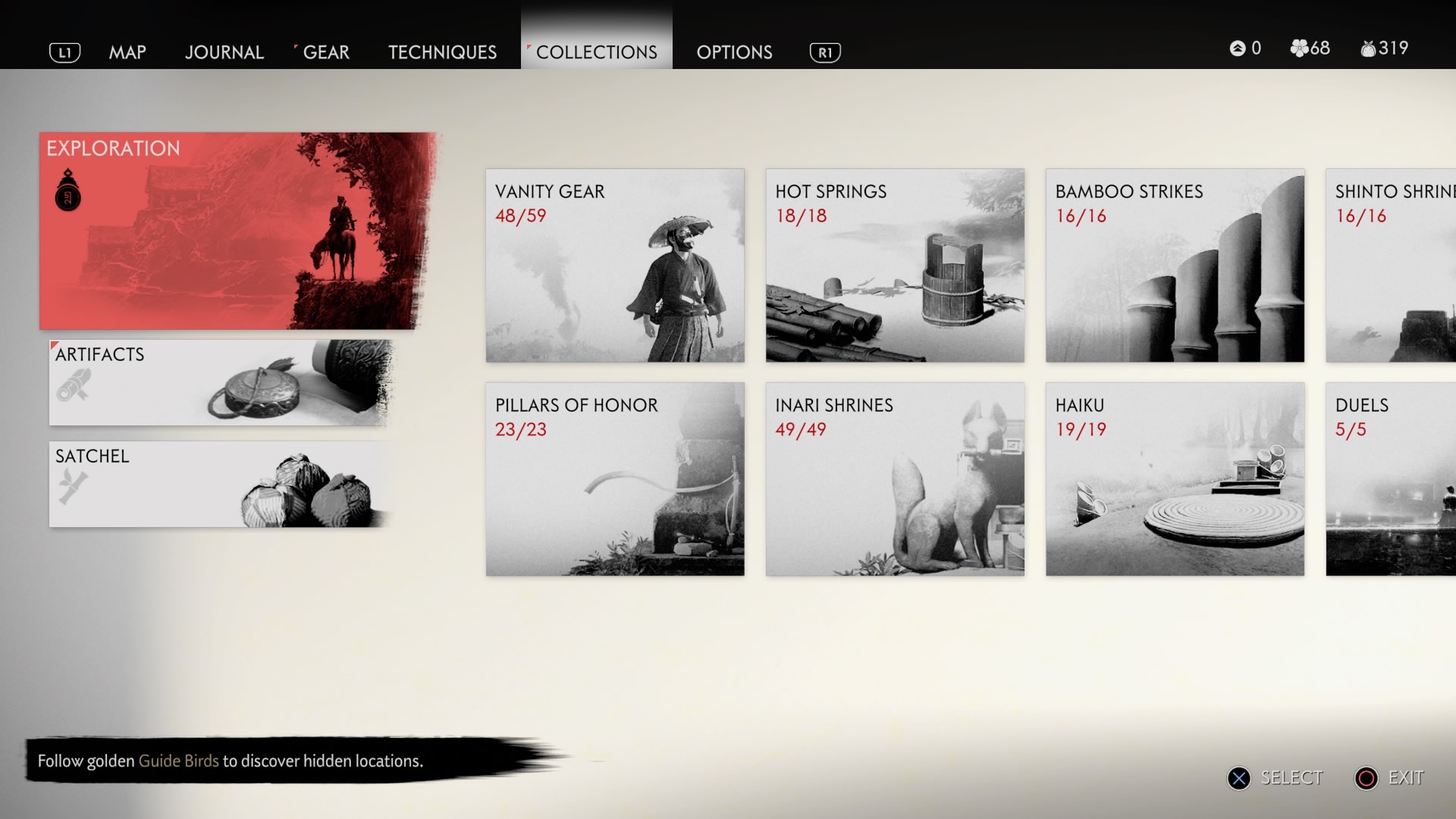
The game's menu design remains committed to minimalism. As a product manager, it is refreshing to see such consistency—every tab has a similar information layout, and navigating is consistent between menus.

Keeping it simple means players can find information they need faster, with less mental processing. The simple color scheme and use of audio cues also help to remove distractions and inform the user of where they are.
The map UI differs slightly in structure from the other menus, but also has some wonderful (albeit less innovative) features. Like many open-world games before it, Ghost of Tsushima's map is uncovered by exploring the game world. Rather than climbing towers to unfog the map, liberating enemy camps reveals any points-of-interest in a radius around the encampment. It's a familiar feature, and it's well executed here.
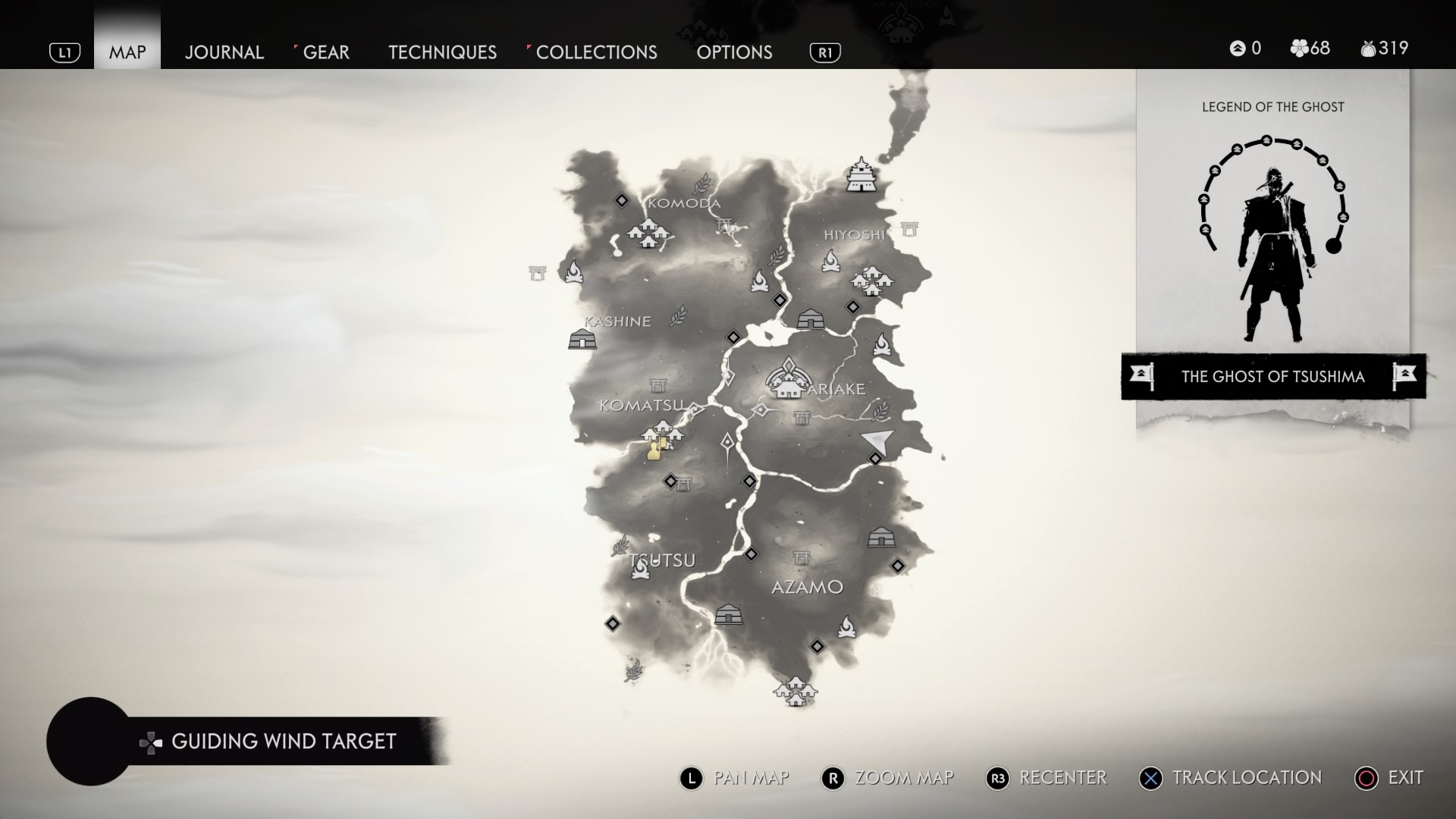
The one major difference between Ghost of Tsushima and other open-world game I've played is that many of the enemy camps are hidden by default, only discoverable by exploration or by freeing prisoners from wandering patrols. This small difference goes a long way to making exploration and discovery feel organic.
Other Stuff I Liked
In addition to the major UI/UX elements, there are several other smaller usability features that deserve recognition:
- Ghost of Tsushima has the best implementation of photo mode I've seen in recent memory. It is accessible with a single button click—it's effortless to access and use in any situation.
- For completionists, liberating all the mongol camps in a section of Tsushima removes all fog in that part of the island, revealing any hidden locations you may have missed in your travels. It's a small feature that respects and rewards players dedicated to 100% completion.
- The ability to customize and save equipment loadouts was a huge time-saver. Streamlining the equipment-swapping process encouraged me to experiment with playstyles while minimizing time spent in menus.
Conclusion
Ghost of Tsushima is by no means a perfect game. But this isn't a game review, it's a user experience review—and from a design standpoint, Ghost of Tsushima is the example to follow. Its minimalist style eliminates distractions, and clever use of environmental elements marry function and style to create a world that is alive and engaging. For anyone seeking UX inspiration, this game receives the heartiest of recommendations.
